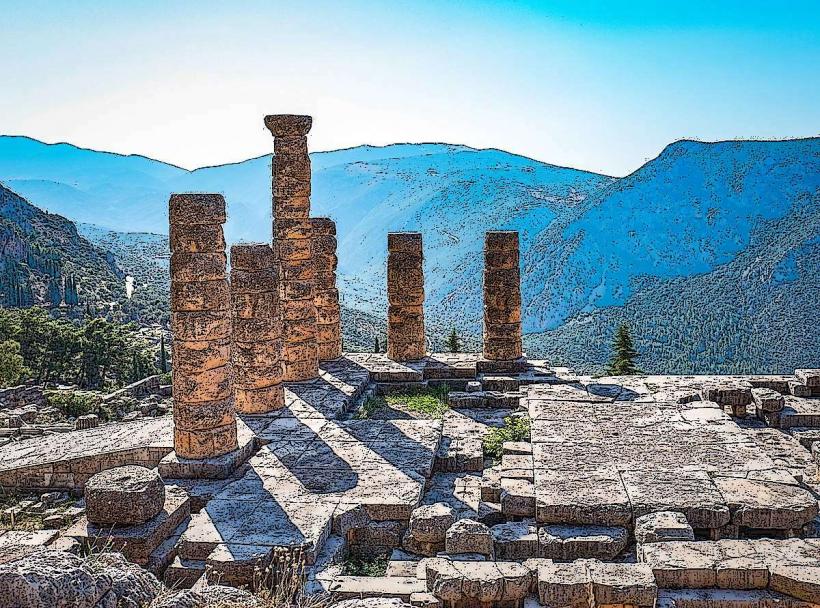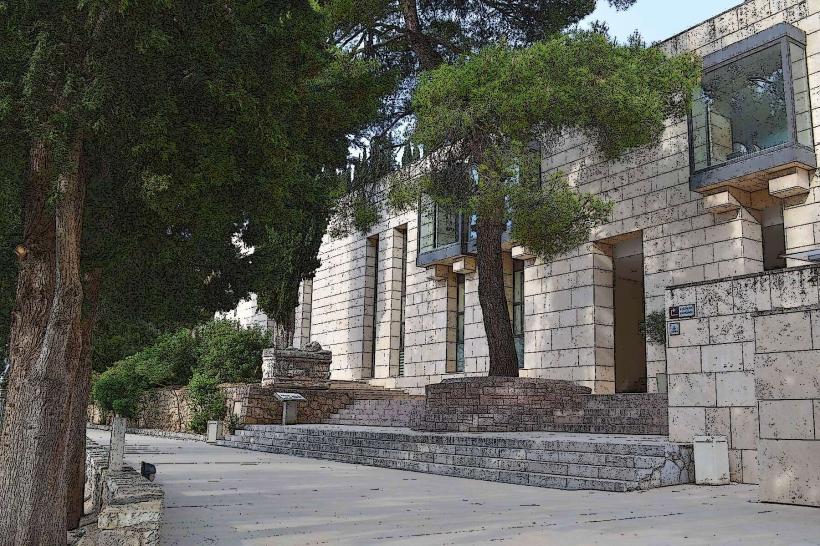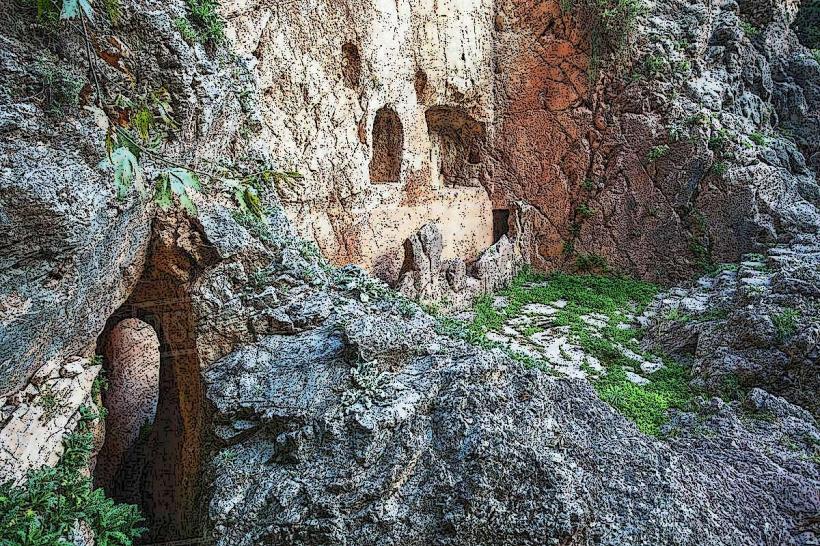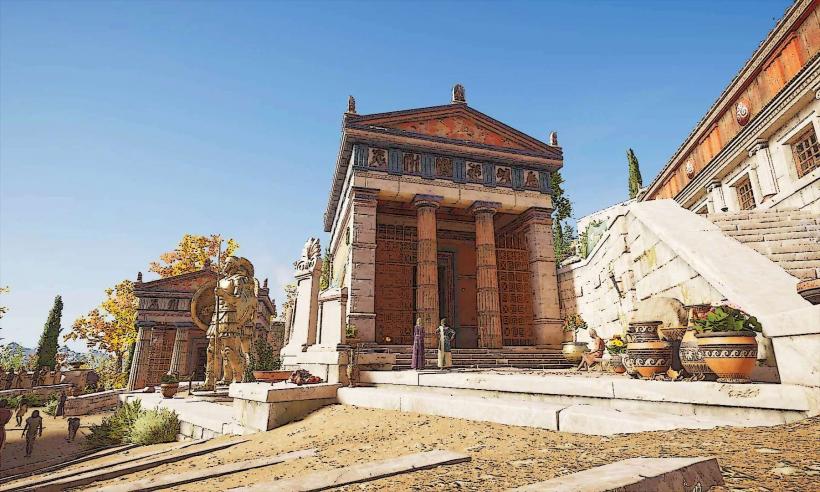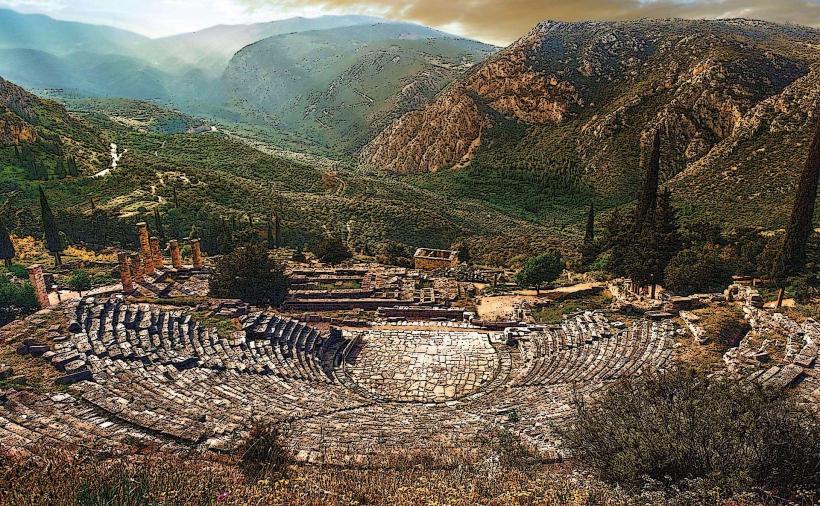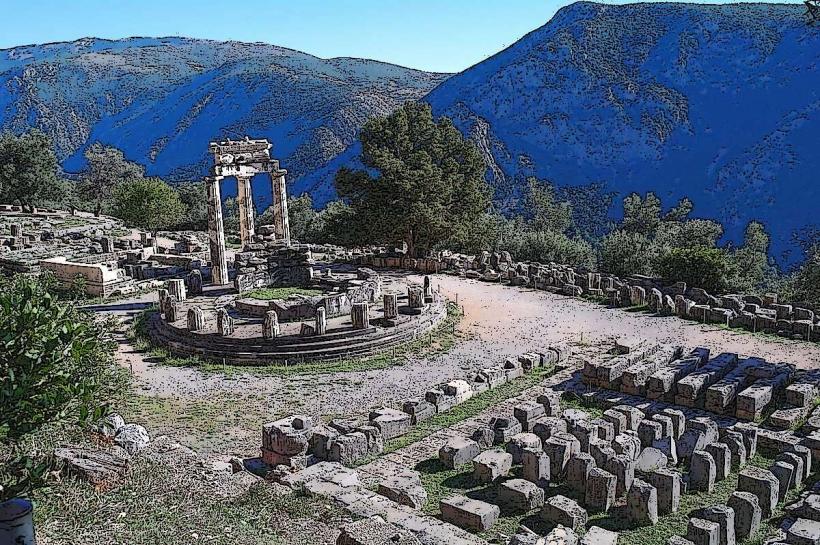Information
City: DelphiCountry: Greece
Continent: Europe
Delphi, one of the most significant archaeological sites in Greece, is renowned for its ancient sanctuary dedicated to the god Apollo and its pivotal role in Greek mythology, history, and religion. Situated on the southern slopes of Mount Parnassus, Delphi was considered the center of the world by the ancient Greeks, famously known as the Omphalos (navel) of the Earth. It was also the site of the ancient Delphic Oracle, a key religious institution where priests and priestesses would deliver prophecies believed to be inspired by Apollo.
Key Aspects of Delphi
The Temple of Apollo: The centerpiece of Delphi is the Temple of Apollo, where the famous Oracle was housed. This grand structure, built in the 4th century BCE, was the focal point of the sanctuary and the place where the high priestess, known as the Pythia, delivered cryptic prophecies. The ruins of the temple still stand today, and visitors can imagine the grandeur of the site while overlooking the spectacular valley below. The Delphic Oracle was highly respected and consulted by many ancient Greek leaders, including kings and generals, before making important decisions.
The Archaeological Site: The ancient sanctuary of Delphi is vast, and its ruins spread across the slopes of Mount Parnassus. Visitors can explore numerous key monuments and structures, including:
- The Ancient Theater of Delphi, which could hold up to 5,000 spectators and offers magnificent views of the surrounding mountains and valley.
- The Ancient Stadium of Delphi, where the Pythian Games, similar to the Olympic Games, were held in honor of Apollo. The stadium is well-preserved, and the starting line is still visible today.
- The Treasuries, small temples built by different Greek city-states to house valuable offerings to Apollo. The most famous of these is the Treasury of the Athenians, which once held a collection of votive offerings, including a bronze statue of Athena.
The Archaeological Museum of Delphi: The Archaeological Museum houses many important artifacts found at the site, offering insight into the history and religious practices of ancient Delphi. Notable exhibits include:
- The Charioteer of Delphi, a life-size bronze statue dating back to 474 BCE, which is one of the most famous works of ancient Greek sculpture.
- A series of bronze statues, pottery, and inscriptions that showcase the religious significance of Delphi and the role it played in ancient Greek life.
- The Sphinx of Naxos, a large statue that once stood at the entrance to the Temple of Apollo and is a prime example of the island of Naxos’s contribution to Delphi’s artistic heritage.
Mount Parnassus: Delphi is nestled at the foot of Mount Parnassus, a mountain steeped in myth and tradition. In Greek mythology, Parnassus was the home of the Muses, the goddesses of the arts and learning. The mountain provides a stunning backdrop to the ruins and is popular for hiking, offering spectacular views of the archaeological site and the surrounding landscape. The area around Delphi is also known for its natural beauty, including olive groves and lush greenery.
Mythological Significance: Delphi was not only a religious center but also a cultural and political one. According to Greek mythology, it was here that Zeus released two eagles from opposite ends of the world, and where they met, marking the center of the Earth. The site was also famously home to the Oracle of Delphi, a spiritual institution believed to be the earthly channel for Apollo’s divine messages. The prophecies given by the Oracle played a significant role in shaping the course of Greek history, with leaders often seeking her advice on matters of war, politics, and religion.
Pythian Games: The Pythian Games, held at Delphi every four years in honor of Apollo, were one of the major Panhellenic festivals of ancient Greece. The games included musical, theatrical, and athletic events, and served as a key cultural gathering for the ancient Greek world. The games were second only to the Olympic Games in importance and contributed significantly to Delphi’s fame as a cultural and religious center.
The Sacred Way: The Sacred Way was the main path that led up to the Temple of Apollo, lined with monuments, offerings, and statues from various Greek city-states. Walking this path today allows visitors to trace the steps of ancient pilgrims who came to Delphi to consult the Oracle. Many of the monuments that once adorned the Sacred Way are now housed in the Archaeological Museum.
The Omphalos: The Omphalos, or "navel of the world," is a stone artifact located near the Temple of Apollo. According to legend, it marked the point where the two eagles sent by Zeus met. The Omphalos symbolized Delphi’s importance as the spiritual center of the ancient Greek world, believed to be the very center of the Earth.
Surrounding Area: Beyond the archaeological site, the region around Delphi offers stunning natural beauty. The nearby town of Arachova, a traditional mountain village known for its stone houses, is famous for its scenic charm, local handicrafts, and delicious food, including a variety of cheeses. The region is also known for its agricultural products, particularly olives and wine.
Spiritual and Tourist Destination: Today, Delphi is not only a popular archaeological site but also a spiritual and reflective destination. Many visitors come to experience the serenity and historical significance of the site, contemplating the ancient connection to the divine and the enduring legacy of the Oracle.
Why Visit Delphi?
Delphi offers a unique blend of natural beauty, mythological importance, and cultural heritage. As one of the most revered archaeological sites in Greece, it provides a fascinating glimpse into ancient Greek religion, politics, and art. Whether you’re interested in exploring its ancient ruins, visiting the museum, or enjoying the breathtaking mountain views, Delphi is a must-see for history enthusiasts, spiritual seekers, and anyone interested in the timeless legacy of ancient Greece.

